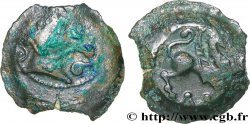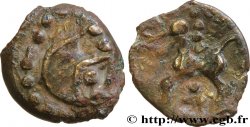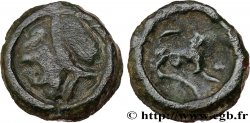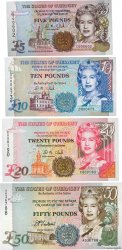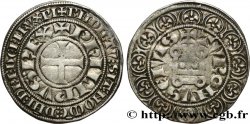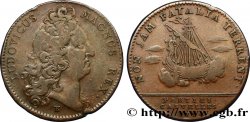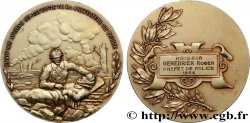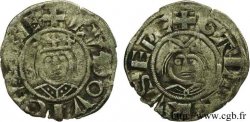v15_0410 - BITURIGES CUBI, INCERTI Bronze au cheval et aux trois annelets
MONNAIES 15 (2002)
起拍价 : 138.00 €
估价 : 250.00 €
未售出的物品
起拍价 : 138.00 €
估价 : 250.00 €
未售出的物品
种类 Bronze au cheval et aux trois annelets
日期: c. 60-50 AC.
材质 bronze
直径 17 mm
模子方针 9 h.
重量 2,88 g.
稀少度 R2
关于品相的说明
Beau portrait, revers complet entouré d’un bourrelet. Patine verte
出版目录中的项代码 :
正面
正面的文字 ANÉPIGRAPHE.
正面的说明书 Tête stylisée à gauche, la chevelure en trois grosses mèches.
背面
背面的文字 ANÉPIGRAPHE.
背面的说明书 Cheval sexué, à gauche ; au-dessus, A renversé ; au-dessous, trois annelets posés deux et un.
评论
Ces monnaies sont classées comme étant des bronzes, c’est à dire frappées. Cet exemplaire nous fait douter ; les traces de coulées de flan qui sont bien visibles peuvent être présentes sur des monnaies frappées, les flans étant obtenus par coulée. Mais le bourrelet qui entoure l’empreinte fait plutôt penser à un potin coulé dans un moule en creux. Cet exemplaire a la particularité de ne pas avoir la double ligne d’exergue présente sur les deux monnaies précédentes, et d’avoir les trois annelets placés à l’inverse ; deux et un au lieu de un et deux. L’exemplaire illustré à la page 468 de la RN 1908 a cette même particularité, mais la tête de l’avers est à droite (cf. MONNAIES XV n°413).
These coins are classified as bronzes, that is to say struck. This example makes us doubt; the traces of flan castings that are clearly visible may be present on struck coins, the flans being obtained by casting. But the bead that surrounds the impression is more reminiscent of a potin cast in a hollow mold. This example has the particularity of not having the double exergue line present on the two previous coins, and of having the three annulets placed in reverse; two and one instead of one and two. The example illustrated on page 468 of the RN 1908 has this same particularity, but the head on the obverse is on the right (cf. MONNAIES XV n°413)
These coins are classified as bronzes, that is to say struck. This example makes us doubt; the traces of flan castings that are clearly visible may be present on struck coins, the flans being obtained by casting. But the bead that surrounds the impression is more reminiscent of a potin cast in a hollow mold. This example has the particularity of not having the double exergue line present on the two previous coins, and of having the three annulets placed in reverse; two and one instead of one and two. The example illustrated on page 468 of the RN 1908 has this same particularity, but the head on the obverse is on the right (cf. MONNAIES XV n°413)








 对产品描述纠错
对产品描述纠错 打印
打印 分享我的选择
分享我的选择 提问
提问 Consign / sell
Consign / sell
 产品介绍
产品介绍